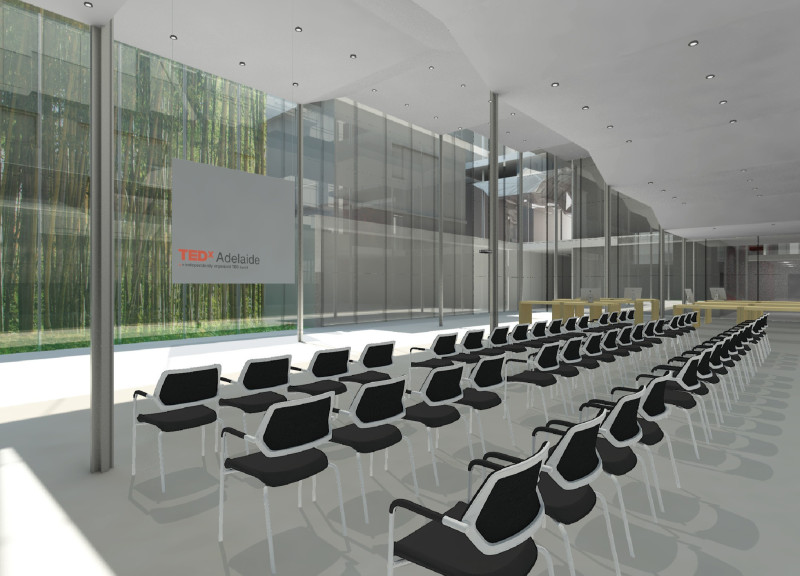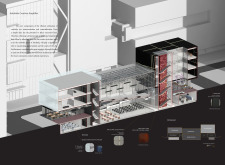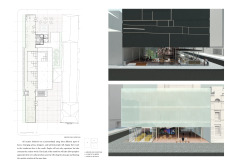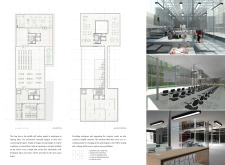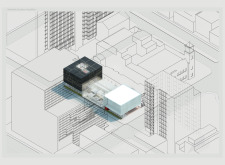5 key facts about this project
The overall concept of the project revolves around the idea of connectivity and community engagement. It adopts an open layout that encourages interaction among its users while providing spaces for solitude and reflection. This duality is crucial in shaping the building’s atmosphere, making it a versatile space that caters to various needs, from collaborative work sessions to quiet contemplation. The design promotes an inclusive environment, inviting not only residents but also visitors to explore and engage with the space.
Architecturally, the project features a harmonious blend of various materials that serve functional, aesthetic, and environmental purposes. Predominantly, the use of reinforced concrete provides structural integrity while allowing for expansive windows that fill the interiors with natural light. This approach ensures energy efficiency and minimizes reliance on artificial lighting. Additionally, local timber is employed in certain areas, adding warmth and texture, while contributing to the sustainability goals of the project by reducing transportation impacts associated with material sourcing.
The building’s façade is a testament to modern design language, characterized by clean lines and a meticulously considered rhythm of openings and setbacks. This design choice not only enhances visual interest but also serves to regulate heat gain and loss, thereby optimizing energy performance. The incorporation of green spaces, including vertical gardens and rooftop terraces, integrates nature into the architectural experience, fostering a connection between indoor and outdoor environments.
Within the interior, the layout is strategically organized to maximize functionality and flow. Spaces are delineated through subtle changes in flooring materials and ceiling heights, allowing for a seamless transition between different areas. The selection of finishes—ranging from polished concrete to soft textile wall coverings—creates a tactile richness that enhances user experience. Additionally, attention to acoustics has been a priority, with sound-absorbing materials strategically placed to minimize noise disruption in shared areas.
A notable aspect of this project is its commitment to sustainable design principles. The architecture incorporates passive design strategies, such as natural ventilation and thermal massing, to reduce energy consumption. Moreover, the implementation of solar panels on the roof not only contributes to the building's energy needs but also aligns with the broader goals of environmental responsibility.
The uniqueness of this architectural project lies in its thoughtful response to the surrounding urban fabric and its integration of community-oriented spaces. By fostering interaction and engagement, the design encourages a sense of ownership among its users. The commitment to sustainability and the use of local materials also enhances the project's relevance within its context, making it a role model for future developments.
For those interested in delving deeper into the architectural aspects of this project, further exploration of the architectural plans, architectural sections, and architectural designs will provide comprehensive insights into the thoughtful details and innovative ideas that shape this modern architectural endeavor. The careful consideration of both form and function illustrates how contemporary architecture can effectively serve its community and environment.


